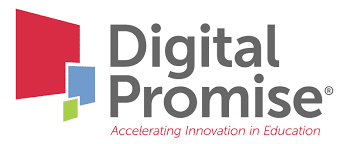How Baldwin County Public Schools Expanded Its Usage of Data Analytics Following the COVID-19 Pandemic
Lightspeed Systems® and Digital Promise have joined forces to provide participating Digital Promise League of Innovative School Districts a better way to track and monitor student-level digital engagement: the use of Lightspeed Digital Insight™. This award-winning data analytics tool enables schools to analyze the efficacy of their technology investments and identify those students at risk of falling through the cracks—all in real time.
Seven districts ranging in various sizes and locality participated in the project, including Alabama’s Baldwin County Public Schools. This profile outlines Baldwin’s leaders are using data to inform decisions and spark new conversations and collaborations with their educational community.
Ensuring Student Data Privacy Compliance
Baldwin purchased Lightspeed Digital Insight to address security issues stemming from its one-to-one initiative. The introduction of devices opened the floodgates to an array of new digital tools and apps being used, and the district was having a difficult time tracking the tools their students and staff were using. This raised security compliance concerns because district leaders did not know the following:
- What apps and programs students and staff had installed and/or were using on their district-owned devices
- How students and teachers were using these apps and programs
- What the privacy policies and practices were for these apps pertaining to student data
Gaining insight into their students’ application usage patterns as well as attaining access to third-party badging and security reviews within the platform has enabled the district to address those questions.
We are evolving into an enterprise K-12 school district, meaning that we are centralizing the purchasing process for apps. In order to make intelligent and informed decisions about the professional development and support we can provide regarding these tools, we have to know what the teachers and students are using.
Tracking Return On Investment (ROI)
The district also purchased Lightspeed Digital Insight to gain visibility into their district’s application usage data and calculate the return on investment on their purchased digital apps and tools. “I knew we were spending millions of dollars on software, but I did not know if that software was being used,” said Homer Coffman, Chief Technology Officer at Baldwin County Public Schools. “We are evolving into an enterprise K-12 school district, meaning that we are centralizing the purchasing process for apps. In order to make intelligent and informed decisions about the professional development and support we can provide regarding these tools, we have to know what the teachers and students are using.”
This type of actionable data has provided the district the visibility required to meet both objectives. Leaders are now tracking the apps and tools their students and teachers are using, enabling them to safeguard student data more effectively as well as to accurately calculate the ROI of their edtech purchases.
We had 8,000 students learning in a virtual environment. We wanted to make sure they were attending classes, doing their work, and had some structure to their days. Having access to our usage and engagement data helped us accomplish that and was very beneficial.
Monitoring Student Progress And Attendance
As the ramifications of the pandemic set in, Baldwin leaders quickly realized they needed to expand their original analytics objectives and begin leveraging their actionable data to also monitor student progress and attendance in their virtual learning environments. “When COVID began, we had to move in a completely different direction,” said Coffman. “We had 8,000 students learning in a virtual environment. We wanted to make sure they were attending classes, doing their work, and had some structure to their days. Having access to our usage and engagement data helped us accomplish that and was very beneficial.”
Parent/guardian Notifications Regarding Student Data
As part of their compliance strategy and to meet FERPA requirements, Baldwin has started providing parents with more information about the software programs their students are using. Baldwin is currently using Lightspeed Digital Insight to generate reports of the approved apps students and staff can use. The Baldwin team intends to provide that information to parents next school year. “We want to inform parents about the software packages we are using and let them know about the vendors we use that require us to provide student data,” said Coffman. “We are already beginning to use the analytics system to generate that information, and we will begin distributing it to our parent community next year.”
Identify And Validate Growing Personnel Needs
For Baldwin, having access to the application usage data of staff and students has shed light on the need for additional personnel to support their growing software integrations. “Since COVID, our district has spent millions on curriculum products,” said Coffman. “There was an assumption that IT was going to support those investments, but we were not part of the initial conversation when they were purchased. Staff started calling our help desk for support on those tools. The help desk would triage the most frequent questions, but then they would have to send them onto our curriculum team. The curriculum team quickly became inundated and reached back out to our department for help, and we currently don’t have the resources to support them.”
Coffman continued, “However, going into next year, I think I’m going to be able to hire five new additional team members to correct this issue because of the insights we’ve gleaned from the data regarding the need for additional professional support.”
Tracking Student Engagement
In January 2021, Baldwin went fully remote for one week. During that time, Baldwin’s leadership team used Lightspeed Systems to monitor student engagement and track and assess the effectiveness of its one-to-one initiative. “For the first time, I could actually see our one-to-one working the way it is designed to work,” said Coffman. “Instead of the devices solely being used for assessments and testing, students and staff were using their edtech tools and devices for educational and curriculum purposes. We had 27,000 kids online, and I was able to see how active and engaged they were through Lightspeed Digital Insight.“
Operational Efficiencies
In addition to tracking their ROI on instructional tools, Baldwin has adopted a holistic ROI strategy that includes tracking application usage data for business and software tools as well. “We have created dashboards for almost all of our administrative team members, including HR, business, and finance,” said Coffman. “That is where some of our largest software purchases are made, so one of my primary focuses is gaining more insight into usage patterns on the administrative side.”
Key Insights and Next Steps
Baldwin’s data journey and the gains they have made in a relatively short period of time are certainly impressive. Looking ahead, the district intends to dig deeper into usage and identify what tools are being used and which are not. “I think we are just scratching the surface about understanding and supporting applications in education,” said Coffman. “I would like to remove a lot of duplications and inefficiencies. We also want to identify potential software risks and create a vetting process for our teachers that gives them enough flexibility to be innovative but does not compromise student data.”
We have created dashboards for almost all of our administrative team members, including HR, business, and financed. That is where some of our largest software purchases are made, so one of my primary focuses is gaining more insight into usage patterns on the administrative side.

Digital Promise works at the intersection of education leaders, researchers, and technology developers to improve learning opportunities for all and close the Digital Learning Gap. Because when all learners have equitable access to technology, when everyone participates, and when everyone learns, we all benefit from a more engaged, informed and just society.
